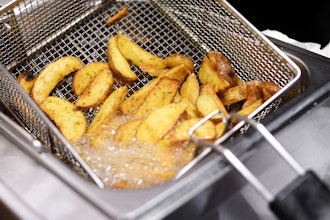
Most people consume too much salt in their diet, leading to high blood pressure and other health issues.
Researchers have discovered a novel way to enhance the saltiness, and even potentially the savoriness, of low-sodium food using electrical stimulation of the tongue through a chopstick-shaped utensil. The concept has applications in other fields, such as stimulating taste as part of a virtual reality experience.
An estimated 2.5 million deaths each year could be prevented globally if individuals cut back their salt consumption to the recommended daily intake of less than five grams, according to the World Health Organization (WHO). Now, Japanese researchers may have found a healthier way for people to enjoy the full flavor of salty foods while still adhering to a low-sodium diet.
Scientists at Meiji University and Kirin, a Japanese food and beverage company, have developed a chopstick-like device that uses a weak electrical charge to stimulate how the tongue experiences saltiness. The research is published in the journal Frontiers in Virtual Reality.
Previous studies have described how introducing a weak electrical current to the tongue can affect the charged ions that make up sodium chloride to either inhibit or enhance saltiness and other taste sensations. The new paper is the first to investigate the extent to which individuals following a low-sodium diet can use electric taste stimulation to cut back on salt intake.
“Many people consume around twice the salt intake standard recommended by the WHO,” said lead author Yoshinobu Kaji, a master’s student in the Graduate School of Advanced Mathematical Sciences at Meiji University.
“This standard cannot be met with a little effort in salt reduction, and a drastic solution is essential. This study is an important approach because it suggests that a 30% reduction in salt can be achieved by electrical stimulation.”
Electrified chopsticks
Kaji and his colleagues – Homei Miyashita, a professor at the Department of Frontier Media Science in Meiji University’s School of Interdisciplinary Mathematical Sciences, and Ai Sato with Kirin – first designed an electrical stimulation waveform with an amplitude and frequency optimized to enhance low-sodium foods. They gently zapped their own taste buds before testing the effects of the electrified chopsticks in an experiment involving 31 people previously or currently on a low-sodium diet.
Each person tasted and rated the saltiness of several saltwater gel samples that had two different levels of saltiness. The results showed that electric stimulation enhanced the saltiness of the low-sodium sample, making it comparable to the control sample, which was 40% or more saltier. In other words, electrified chopsticks or other utensils could reduce salt intake by 30% without sacrificing saltiness. More than 80% of subjects said they could tolerate the electric stimulation on a daily basis.
In a second qualitative experiment, the participants consumed a low-sodium miso soup, which many found had a better mouthfeel and taste, suggesting that electric taste stimulation may also affect umami, according to the paper. Umami is a fifth sensory taste often described as savoriness.
From diet to virtual reality
The long-term goal is to develop a commercially available chopstick-shaped device for daily use by those following a low-sodium diet or trying to reduce their salt intake, according to Kaji. Most people consume about twice the recommended maximum level, meaning such a utensil could help reduce health conditions like high blood pressure.
In addition, the researchers at Miyashita’s lab at Meiji University are investigating applications in other fields, such as stimulating taste as part of a virtual reality experience.
“In the future, for example, it may be possible to virtually reproduce the taste of food and drink, or to realize taste expressions that are difficult to achieve with conventional eating experiences,” Kaji said.






















